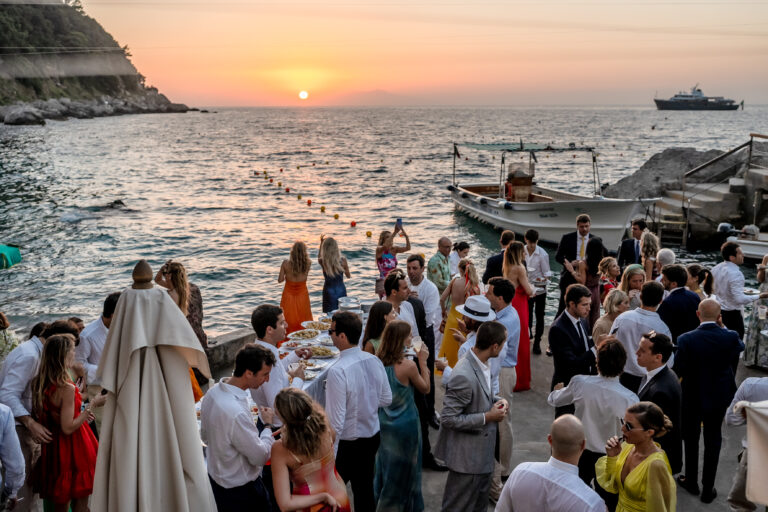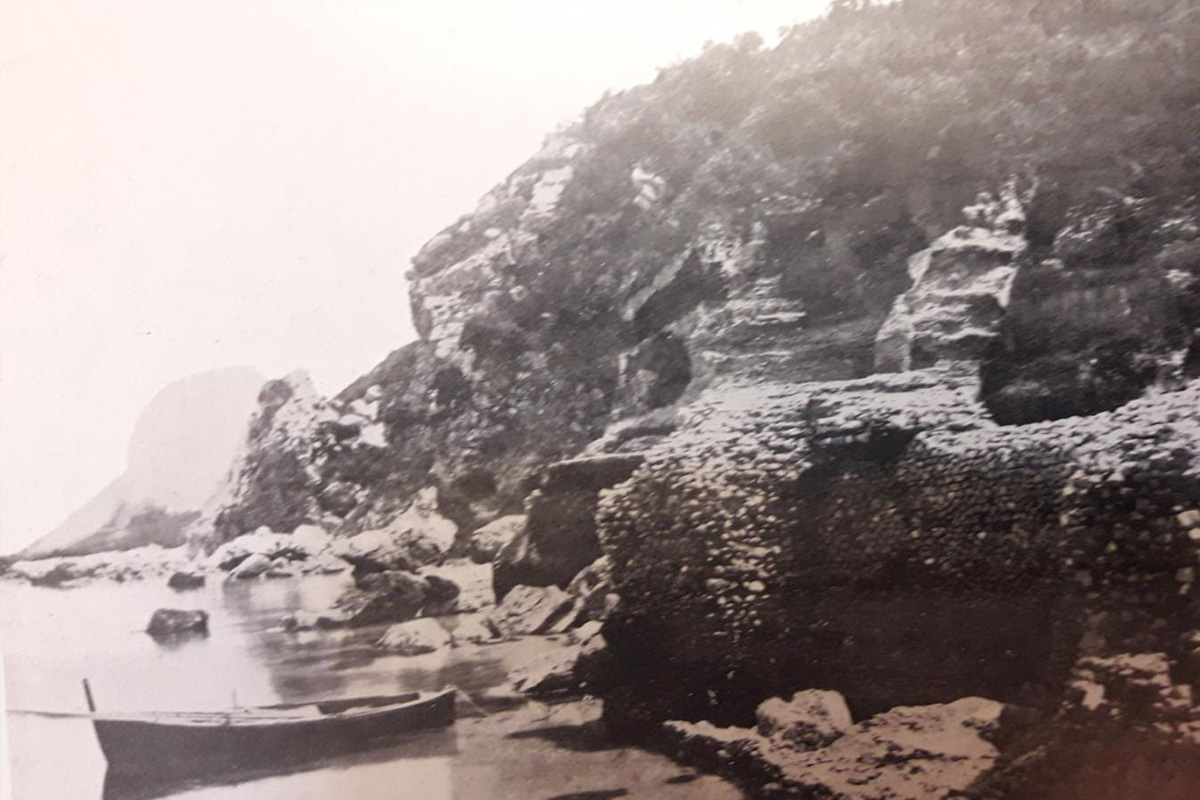



Swimming in the sea of the Bagni di Tiberio means immersing oneself in two thousand years of history. The area of the Maritime Villa of Augustus (the Palace by the sea) is defined by Feola, archaeologist and mayor of Capri during the Bourbon period, as “Marinella di Torre“. The Maritime Villa of Augustus, built by its Egyptian architect Masgaba, called by the Emperor Ktistes (founder of the island), extended from Punta Vivara, at the end of the beach of Marina Grande where the Roman port was located, up to the current Baths of Tiberius and Punta Trasete. Many scholars consider it the largest and most sumptuous imperial villa on the island. In truth, everything on Capri is still identified with Tiberius for a simple reason: Augustus stayed there for short periods Tiberius for ten years from 27 AD to 37 AD.
It was J.J.Bouchard, French spy and libertine, in 1632 to describe the magnificence of the Palace by the sea of Augustus and Tiberius. In 1700 the presumed Austrian archaeologist Norbert Hadrawa notes the many findings in the excavations made in the area: an altar of Cybele is still on display at the British Museum in London. According to the historian Romanelli, Hadrawa found at the beach lido “several paved floors, endless shards of ancient yellow, ancient pastes of different colors, especially lapis lazuli, and a bust of Vesta donated later to the abbot Tata“. This has led to believe that a small temple dedicated to Vesta, goddess of the domestic hearth, rose in that location. The imperial “Marinella” by the sea was much larger than what can be seen now. The remains of the Roman walls submerged and those still visible along the cliff beyond the establishments make us assume that it was a pier of mooring of fair size behind which extended a series of pools of tufa for the breeding of blue fish essential for the preparation of Garum, fish sauce, which was never missing on the tables of the ancient Romans and emperors. A flight of marble stairs led to the great exedra-ninfeo in opus reticulatum and tuff. The four square bases still visible make us think that high marble columns rose in front of the nymphaeum.
This and much more is in the history of the Bagni di Tiberio.
This is why, while you slowly swim among the remains of its ancient pools or taste Costanza’s marjoram-scented ravioli at the restaurant, close your eyes and you will feel like you are magically returning to the imperial Capri of Augustus and Tiberius.
Per fornire le migliori esperienze, utilizziamo tecnologie come i cookie per memorizzare e/o accedere alle informazioni del dispositivo. Il consenso a queste tecnologie ci permetterà di elaborare dati come il comportamento di navigazione o ID unici su questo sito. Non acconsentire o ritirare il consenso può influire negativamente su alcune caratteristiche e funzioni.
Subscribe to our email newsletter today to receive updates on the latest news, tutorials and special offers!